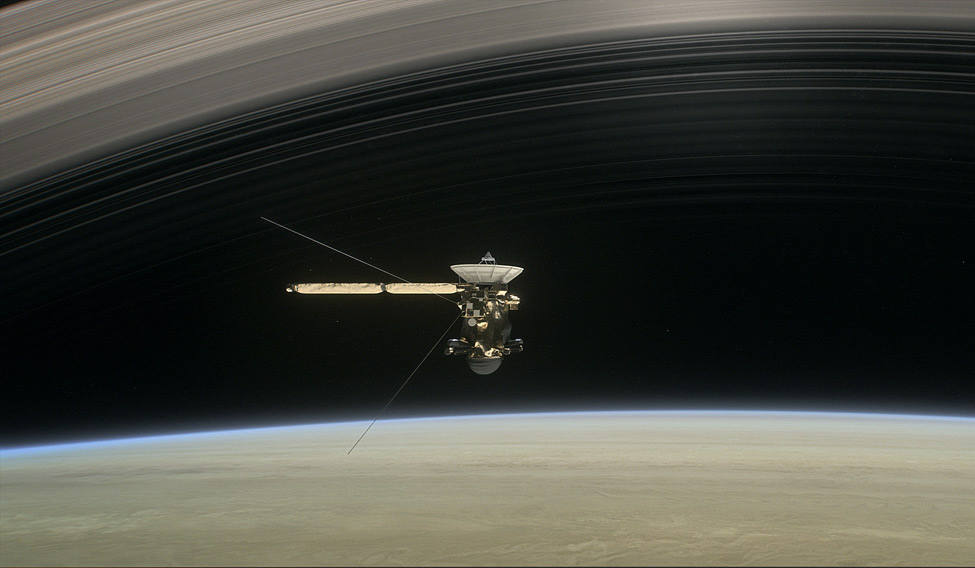NASA's Cassini spacecraft has completed its last close brush with Saturn's hazy moon Titan and is now beginning its final set of 22 orbits around the ringed planet.
In its final close approach to Titan on April 21, the spacecraft passed at an altitude of about 979 kilometres above the moon's surface and Cassini transmitted its images and other data to Earth following the encounter, NASA said in a statement on Monday.
Scientists with Cassini's radar investigation will be looking this week at their final set of new radar images of the hydrocarbon seas and lakes that spread across Titan's north polar region.
The radar team also plans to use the new data to probe the depths and compositions of some of Titan's small lakes for the first (and last) time, and look for further evidence of the evolving feature researchers have dubbed the "magic island."
"Cassini's up-close exploration of Titan is now behind us, but the rich volume of data the spacecraft has collected will fuel scientific study for decades to come," said Linda Spilker, the mission's project scientist at NASA's Jet Propulsion Laboratory in Pasadena, California.
The flyby also put Cassini on course for its dramatic last act, known as the Grand Finale.
As the spacecraft passed over Titan, the moon's gravity bent its path, reshaping the robotic probe's orbit slightly so that instead of passing just outside Saturn's main rings, Cassini will begin a series of 22 dives between the rings and the planet on April 26.
The mission will conclude with a science-rich plunge into Saturn's atmosphere on September 15.










